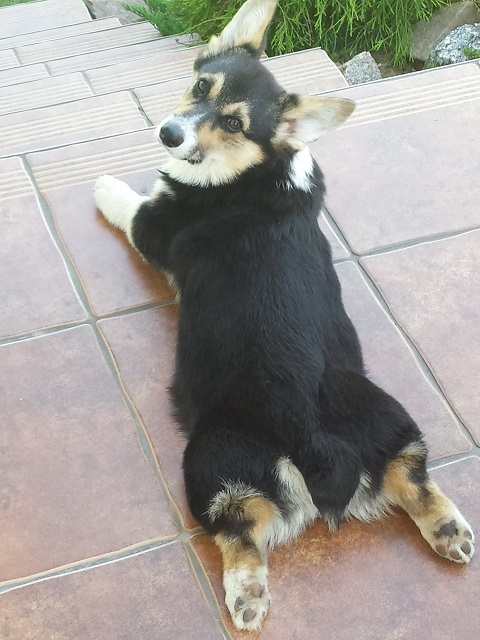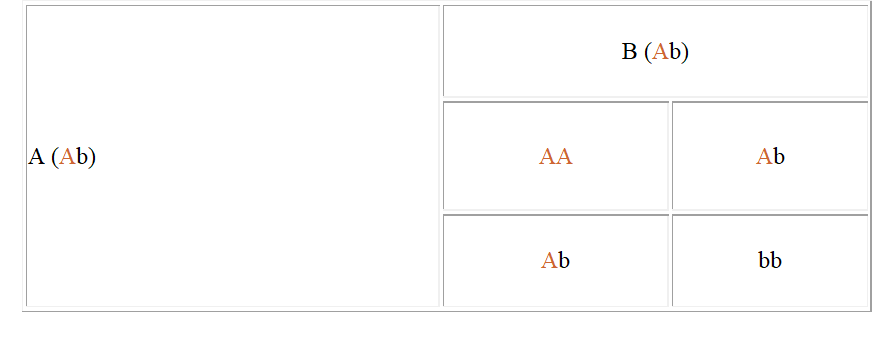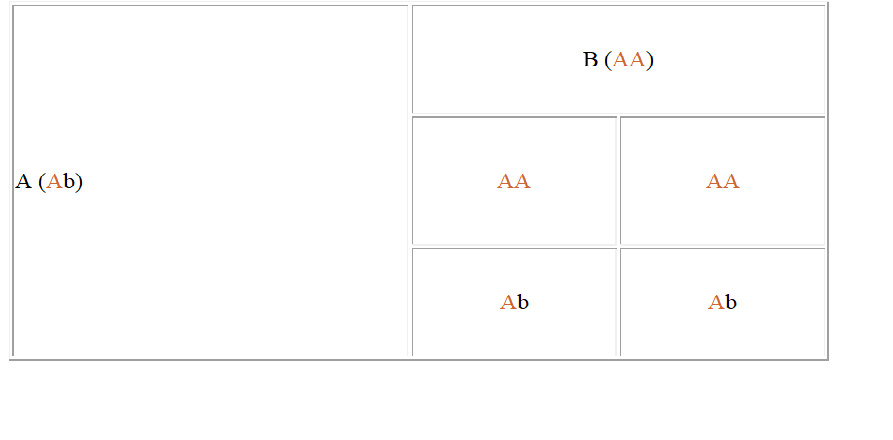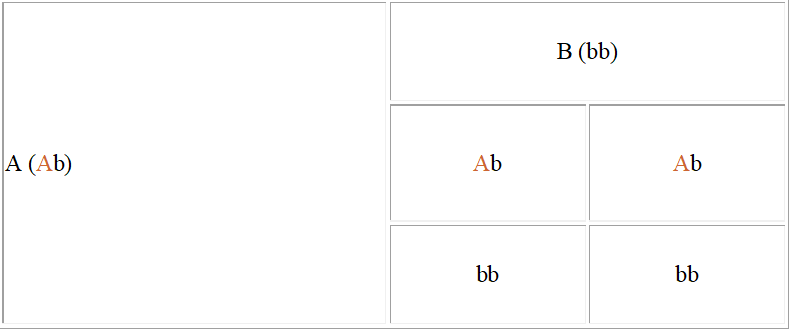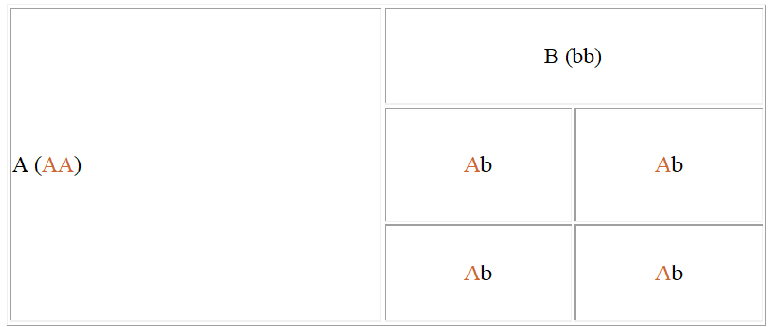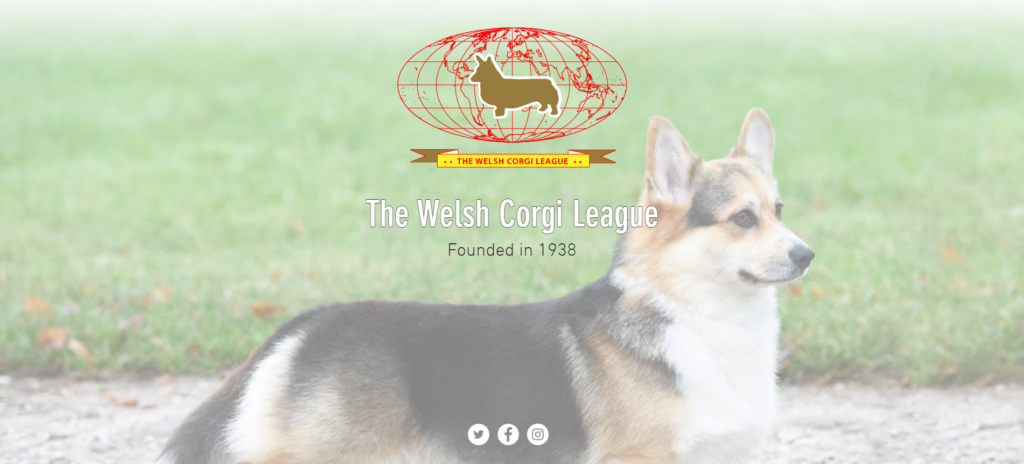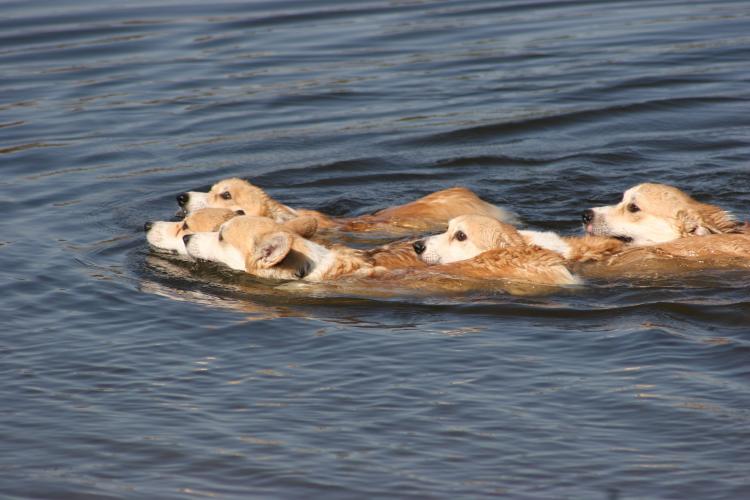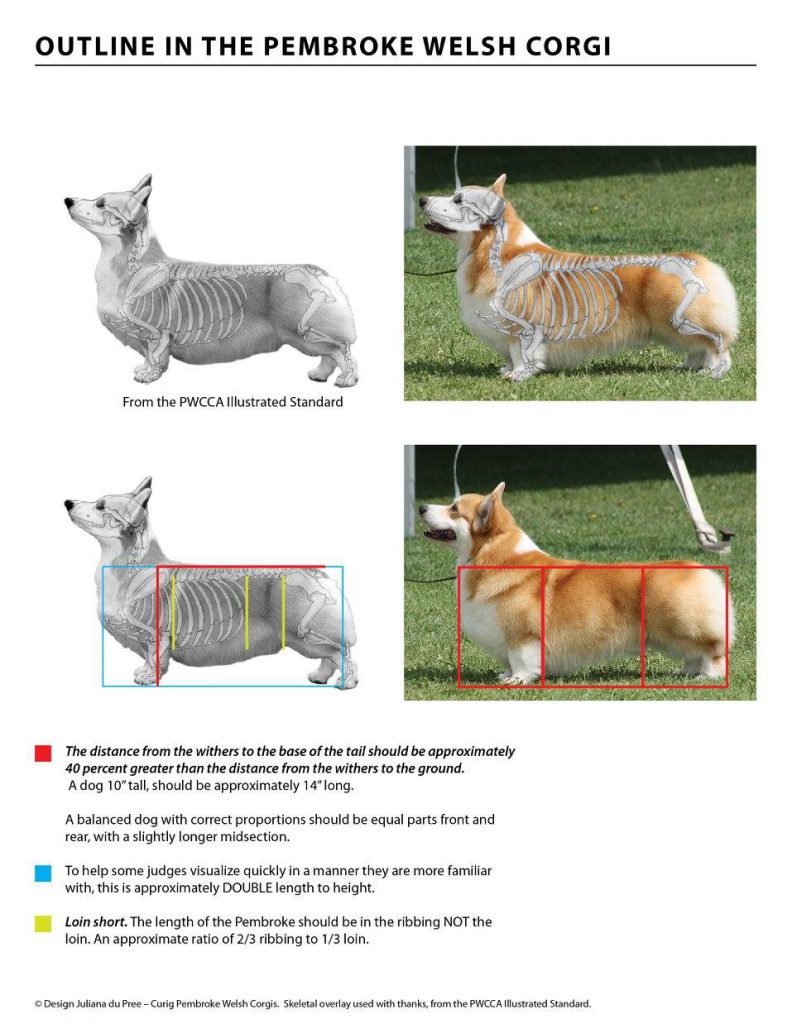This article is devoted to breeding corgi with a naturally short tail. Courtesy of our friend, breeder – Leif Herman Wilberg, Siggen
From the history of the pembroke corgi we can read about the little bobtail dog that has been bred on Welsh farms through centuries. We know that in the beginning of this century the majority of pembrokes were born with bobtails.
I believe that the period in the beginning of this century, when the pembroke and the cardigan were registered in the Kennel Club as one breed and were also interbred to a certain extent, is the reason why the bobtails are so few today. When the breeds were separated I 1934, the longtail gene had been introduced to the pembroke population and the breeders docked the puppies that were born with long tails as the standard described a short tail.
The bobtail gene has proven to be a dominant gene, and it is very easy to loose a dominant gene if you are not aware of the genetic rules. If you want to keep a dominant gene in your population, one of the parents have to carry the gene, otherwise you will loose it. It is easy to understand how the breeders would hold on to their best puppy regardless of it being bobtail or longtail as they were all docked anyway, and how the amount of bobtail dogs in the population gradually could decrease.
When we got the docking ban in Norway, I am happy to say that most of the corgi breeders in Norway agreed that they wanted to take part in the project of trying to reintroduce the bobtail gene into our corgi population.
This has been a necessity as our population is so small that we needed to use all our breeding material to keep our breed healthy while introducing the bobtail gene. Although I had bobtails born in my first litter in 1968, and also in a litter in the mid seventies, we were not able to find any dogs of our old lines that could be used when we got the docking ban.
This meant that we had to import dog from England where Mrs. Peggy Gamble (Blands) and Miss Patsy Hewan (Stormerbanks) had just started a project of reintroducing the bobtail gene to the breed.
Miss Patsy Hewan at that time run a very large kennel, and over the years she had managed to keep the bobtail gene in her stock. Peggy Gamble bought a bitch from Patsy, Stormerbanks Bobs, and Peter Hopwood (Jofren) used her uncle Stormerbanks Barnaby Bear to introduce bobtails into his line.
As Patsy Hewan died shortly after they agreed to start the bobtail project, the Blands and Jofren kennels were the ones that carried out the pioneer work, and Stormerbanks Bobs and S. Barnaby Bear will be in the pedigrees of most bobtailed dogs in England, and in Norway. Miss Sarah Taylor (Bymil) and Miss Leila Moore (Kaytop) also had litters containing bobtail puppies sired by Kaytop Ming, but it seems the bobtail puppies have not been used for breeding and that line seems to be lost.
I know that Peggy Gamble also gave her stud dogs for free to some pet owners with bobtail dogs, but I do not think that they have bred on, at least I do not know of any.
There are many hypotheses of defects that are supposed to be linked to the bobtail gene. However, as far as I know there has been no serious research into this matter, and the Norwegian corgi breeders were not willing to accept these theories as long as they were not supported by scientific proof. We could not understand why dogs should be so different than other wild animals or even humans, which live and reproduce happily with their short tails.
We must admit that the first bobtail dogs that were imported to Norway were not of the quality that we were used to, and we had to take a few steps backwards quality wise. This because we had to use our best bobtails even though there might be better longtails available.
For many years we have done mainly longtail/bobtail matings to try and preserve most of our quality, and have tried to import breeding material and find stud dogs that could help us to improve our quality. It has been a long and difficult process, but the last three or four years I am happy to say that I think the quality has improved very much, and our bobtail corgis has won well at group level, and I myself have won both BIS progeny group and breeders group at big International shows with all bobtails.
We have not experienced any of the predicted defects to pop up in our breed. It is as sound as it has always been. Some years ago the Norwegian Welsh Corgi Klubb together with Norsk Kennel Klub and the Veterinary institute, made an x-ray study of the spine of a random selection of bobtail dogs from double bobtail matings.
The conclusion to the study was that there was no indication what so ever to say that the bobtail gene should be responsible for any spinal deformities.
In nearly every litter we will have puppies with different tail length. Some can be long, some half long and some quite short. We do not know why the bobtails appear with different length, but it is a fact that the tail is the only body structure that will appear with different number of bones, this is also true for the longtails.
